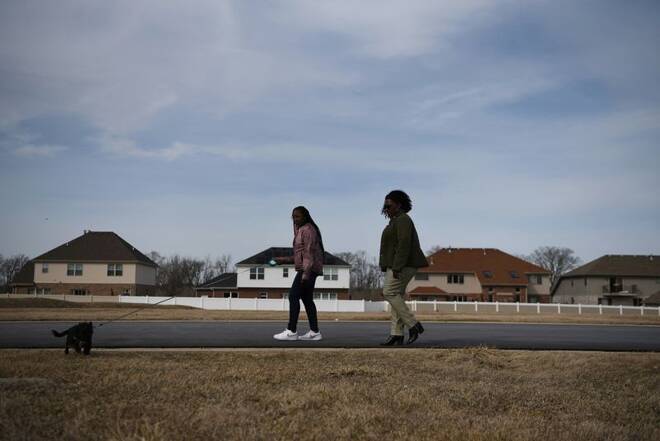Advertisement
Advertisement
For children who lost a parent, the pandemic pain will never end
By:
By Brad Brooks CONVERSE, Texas (Reuters) - Aidan Garza often talks about his dad in the present tense, as if David Garza were still right across the living room, sitting in his favorite chair, calling the 12-year-old over to watch a Star Wars series.
By Brad Brooks
CONVERSE, Texas (Reuters) – Aidan Garza often talks about his dad in the present tense, as if David Garza were still right across the living room, sitting in his favorite chair, calling the 12-year-old over to watch a Star Wars series.
As if he had never collapsed while out running errands on Dec. 30, 2020, in Converse, Texas. As if he had never died of COVID, one of the now 1 million Americans to succumb to the pandemic.
“He’s such a warm guy,” says Aidan. “Every time I would hug him, I feel like I’m touching a cloud.”
No government program at any level is tracking American children such as Aidan and his big brother Julius who have lost at least one primary caregiver to COVID, but researchers’ estimates put the number at over 213,000 kids.
Deep racial disparities among kids who lost at least one parent or caregiver to COVID reflect the course of a disease that has illuminated inequities in areas such as healthcare in the United States. Native American children, for instance, are four times as likely to have lost a parent to COVID than white kids.
Susan Hillis, the lead author of the first major modeling study to determine the numbers of children who lost a parent or caregiver to COVID, published last October in the journal for the American Academy of Pediatrics, said that it is crucial that hospitals, schools and churches work together to identify families who lost a caregiver so that children can be protected from neglect and other threats.
While many look forward to the end of the pandemic, families such as Aidan and Julius’s show its profound and enduring impact.
“Our ‘normal’ is not going to be like anyone else’s, because we lost someone,” said Margaret Garza, Aidan and Julius’s mother.
Sandra McGowan-Watts, whose husband Steven Watts died in May 2020, has been trying to maintain as much of her 13-year-old daughter Justise’s routine as possible.
Last summer, when the bushes in her yard needed to be trimmed, Justise found her dad’s hedge trimmers and got to work.
“She does the things that he would do,” Sandra says.
‘NEVER FORGET’
Not long ago as he walked home from his school bus stop, a blue jay appeared in Aidan Garza’s path. It was so beautiful, “I didn’t think it was real,” he said. “It was so calm, not feisty like the other ones.”
Aidan swears that his dad has taken to inhabiting blue jays to keep watch over him.
The boy peppers his conversations about his dad with the lessons he has learned from therapy, which he and his brother have received since their dad died, on how to confront his grief. In talking about his heart and how much he should be thinking about his dad, Aidan says “we always got to save a little spot for him – and a big spot for emotions.”
Aidan’s brother, Julius, has trouble with that one.
At 14, he remembers more than his brother about what life was like before that day late in 2015 when Margaret and David Garza adopted the boys.
Their birth mother had abandoned them. Their birth father was sent to prison for abusing their stepsister, pushing them into the foster care system. Julius is struggling to understand losing David after all he went through.
“Dad dying was so far the saddest thing that has ever happened in my life,” he says. “I can never forgive that.”
Gently pressed by his mom to open up, Julius’ voice tightens and he says what every father would hope a son would say of them:
“I’m always going to love him,” Julius says. “I’ll always miss him. I’ll never forget him.”
How Reuters has tracked the pandemic
During the coming days, various trackers of the COVID-19 pandemic will reach 1 million U.S. deaths at different times. This variation is due to how each organization counts COVID deaths. For example, Reuters includes both confirmed and probable deaths where that data is available.
The precise toll of the pandemic may never be truly known. Some people who died while infected were never tested and do not appear in the data. Others, while having COVID-19, may have died for another reason, such as a cancer, but were still counted. The CDC estimates that 1.1 million excess deaths have taken place since Feb. 1, 2020, mainly from COVID. Excess mortality is the increase in total number of deaths, from any cause, compared with previous years.
You can read more about the Reuters methodology for tracking COVID cases and deaths here: https://graphics.reuters.com/world-coronavirus-tracker-and-maps/en/methodology/
You can find more information on CDC excess deaths here: https://www.cdc.gov/nchs/nvss/vsrr/covid19/excess_deaths.htm
(Reporting by Brad Brooks; Additional reporting by Callaghan O’Hare; Editing by Lisa Shumaker)
About the Author
Reuterscontributor
Reuters, the news and media division of Thomson Reuters, is the world’s largest international multimedia news provider reaching more than one billion people every day. Reuters provides trusted business, financial, national, and international news to professionals via Thomson Reuters desktops, the world's media organizations, and directly to consumers at Reuters.com and via Reuters TV. Learn more about Thomson Reuters products:
Did you find this article useful?
Latest news and analysis
Advertisement
